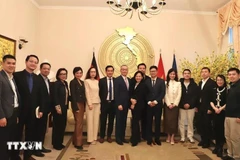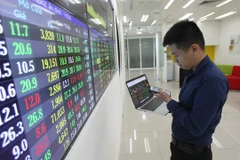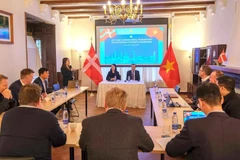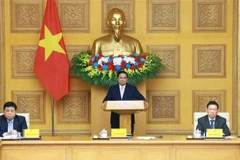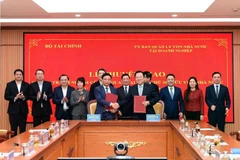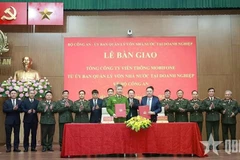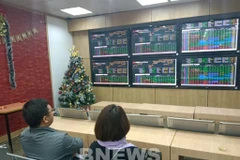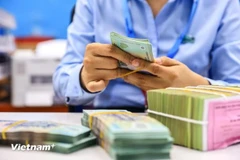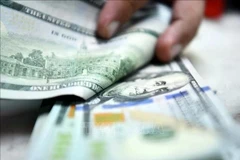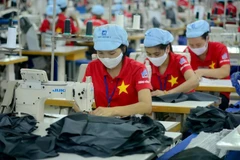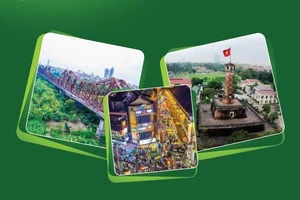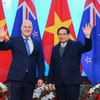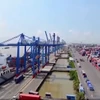Sharingover 240 kilometres of border with Cambodia, Tay Ninh province plays animportant role in promoting foreign economic relations developmentstrategies. It is a link in sub-regional cooperation programmes, as wellas regional and international economic integration plans. In thesocio-economic development strategy, the province has identified theborder economic zones as a momentum to accelerate the growth andrestructuring of the economy towards industrialisation and modernisation
Tay Ninh has Moc Bai Border Gate Economic Zone andXa Mat Border Gate Economic Zone, which are very dynamic, contributingto the local socio- economic development. The Moc Bai Border GateEconomic Zone has a unique geographical advantage with its location onthe trans-Asia highway and 73 kilometres from Ho Chi Minh City. It notonly acts as a trade gateway between Tay Ninh province and Cambodia, butalso plays an important role in forming the outward economicdevelopment as well as an international trade centre of the sub-regionalcooperation plans under the economic development strategy of the southof Vietnam.
The zone is among few border economiczones allowed by the Prime Minister to implement open policies towardsthe "non-tariff" for the commercial and industrial areas within theborder economic zones. The policies offer many investment incentivesincluding non-tax or reduced tax for companies, individuals, andfacilitate the immigration and residency at the border economic zone.
Pursuant to the promulgation of Decision144/2004/QD-TTg of the Prime Minister, dated December 8, 2004, theactivities of investment, trade, services, and tourism at the Moc BaiBorder Gate Economic Zone have been improving. The zone is also selectedas one of three urban areas under the project of the development of theurban areas along the Mekong Sub-region for infrastructure development,funded by the ODA of the Asian Development Bank with total investmentof 46.13 million USD.
Being in operation for over10 years, the Moc Bai Border Gate Economic Zone has attracted 36investors with 47 projects and total registered capital of 241.13million USD and 6.746 trillion VND. Immigration and tourism in Moc Baihas been growing. Since the trans-Asia road was finished and the openhours of the two border gates of the two provinces of Tay Ninh and SvayRieng province of Cambodia has been extended from 06.00 to 22.00 hoursfrom May 2005 and Cambodia has exempted Vietnamese citizens from visarequirements since 2008, the number of passengers between the two bordergates has been increasing. It is recorded that there were 601,752passengers crossing the Moc Bai border gate in 2005; 2,700,791 in 2011,and 2,784,566 in 2012. The total values of exports and imports throughthe gate also have steadily increased each year (112.752 million USD in2007; 543.918 million USD in 2011; 861.683 million USD in 2012; and453.036 million USD in the first nine months of 2013).
Along with the Moc Bai Border Gate Economic Zone, the Xa Mat BorderGate Economic Zone also contributes greatly to Tay Ninh's exportactivities. The Xa Mat zone is the most important international bordergate of the southern region as it is located on 22B Highway, consideredthe backbone road connecting the Tonle Sap Lake tourist site with PhnomPenh (Cambodia) and Bangkok (Thailand) and the other northern provincesof Cambodia and Laos, and onward to Myanmar and India.
In addition to its favourable geographical location at the heart ofthe southern areas, the Xa Mat zone is gifted with many otherconditions such as favourable natural resources for forming anenvironmental protection master plan, promoting general economicdevelopment, thereby narrowing the development gap between thesub-regions in the area.
Besides, taking advantageof the favourable natural conditions including the good topography,geography and rich water resource, the Xa Mat Border Gate Economic Zonecould offer great advantages for the border economic development,security and defence.
Currently, there are nineprojects with total registered investment of 315 billion VND at the XaMat zone. The values of exports and imports have also annuallyincreased; in 254.469 million USD in 2007; 638.237 million USD in 2011;790.634 million USD 2012; and 913.062 million USD in the first ninemonths of 2013.
According to Kieu Cong Minh,Deputy Director of the Tay Ninh Economic Zones Authorities, besidesactivities of opening and expanding a set of crossings and the sidegates for commercial activities between Vietnam and Cambodia, thePeople's Committee of Tay Ninh province is also implementing the openpolicies, which help the Tay Ninh's border economic zones increasinglypromote their potential effectively as well as consolidate theirpositions.
Particularly, thanks to the specialmechanisms and preferential policies to attract investment, combinedwith the allocation of national budgets, the border economic zones ofMoc Bai and Xa Mat have made significant changes towards the standardmodels of urban civilisation, actively contributing to the developmentof foreign economic relations as well as regional and world integration.-VNA



